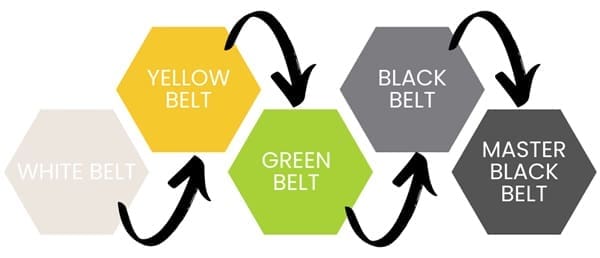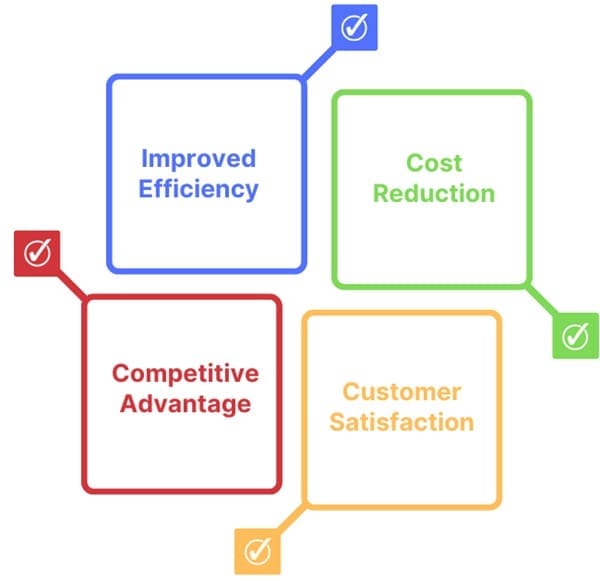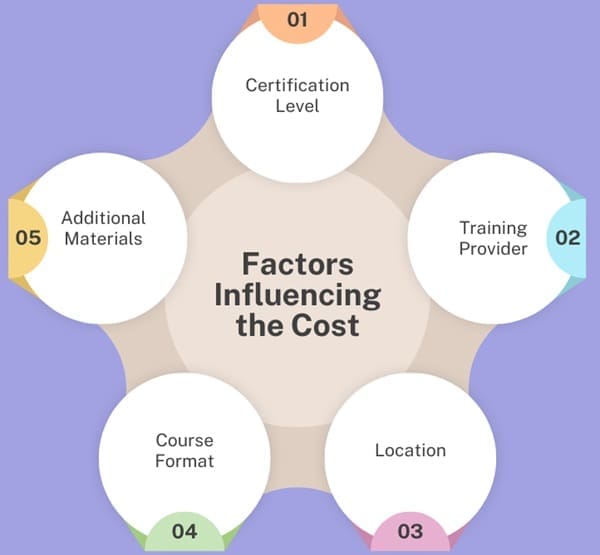When considering the path to becoming a Six Sigma professional, understanding the Six Sigma certification cost is crucial. This investment varies based on factors like the certification level, training provider, and additional materials or exams. Whether you’re aiming for a Yellow Belt or a Master Black Belt, knowing the financial commitment helps in planning and maximizing the return on this career-enhancing qualification.
A Six Sigma certification is a globally recognized credential that signifies expertise in quality management and process improvement. It’s highly valued in various industries, helping professionals advance their careers and improve business operations.
However, obtaining this certification involves costs that vary based on several factors. This guide will break down those costs and provide comprehensive information to help you make an informed decision.
Table of contents
- What is Six Sigma Certification?
- Types of Six Sigma Certifications
- Why Are Businesses Seeking Six Sigma Professionals?
- Importance of a Six Sigma Certification for Individuals
- Scope of Six Sigma
- Factors Influencing the Cost of Six Sigma Certification
- What Does a Six Sigma Certification Cost?
- Cost Breakdown by Training Providers
- Average Salaries by Certification Level
- Financial Aid and Discounts
- Return on Investment (ROI)
- Final Words
- Related Articles
What is Six Sigma Certification?
Six Sigma certification is a professional credential that validates an individual’s expertise in Six Sigma methodology, a data-driven approach to improving business processes and reducing defects.
Developed by Motorola in 1986, Six Sigma aims for near-perfection, targeting only 3.4 defects per million opportunities. Certifications are tiered by belts, similar to martial arts, ranging from White Belt (basic knowledge) to Master Black Belt (expert level).
Each belt signifies proficiency in specific aspects of Six Sigma:

- White Belt: Basic understanding and support in project teams.
- Yellow Belt: Fundamental concepts and data collection.
- Green Belt: Intermediate skills in project management.
- Black Belt: Advanced techniques and leadership in process improvement.
- Master Black Belt: Highest expertise, mentoring, and strategic oversight.
Certification can lead to career advancement, higher salaries, and improved business efficiency, making it a valuable asset for professionals and organizations aiming for operational excellence.
Types of Six Sigma Certifications

There are several levels of Six Sigma certifications, each with different focuses and costs:
- Yellow Belt: This is the entry-level certification. It covers the basics of Six Sigma and prepares you to support project teams.
- Green Belt: This level is for those who lead small projects or assist Black Belts with larger projects. It involves more in-depth training.
- Black Belt: This certification is for those who lead significant projects. It requires a deep understanding of Six Sigma principles and methodologies.
- Master Black Belt: This is the highest level. It is for those who mentor Black Belts and lead large-scale projects across an organization.
Why Are Businesses Seeking Six Sigma Professionals?

Businesses are increasingly looking for Six Sigma professionals because:
- Improved Efficiency: Six Sigma methods streamline processes, reducing waste and increasing efficiency.
- Cost Reduction: By identifying and eliminating defects, businesses save money.
- Customer Satisfaction: Better quality control leads to higher customer satisfaction and loyalty.
- Competitive Advantage: Companies with Six Sigma-certified employees stand out in the market.
Importance of a Six Sigma Certification for Individuals
For individuals, a Six Sigma certification offers numerous benefits:
- Career Advancement: Certified professionals often move up faster in their careers.
- Higher Salaries: Six Sigma certification is associated with higher pay.
- Skill Development: Gain valuable skills in project management, problem-solving, and data analysis.
- Job Security: Certified individuals are in high demand, offering better job stability.
Scope of Six Sigma
The scope of Six Sigma extends across various industries:
- Manufacturing: Originally developed for manufacturing, Six Sigma is widely used here.
- Healthcare: Improving patient care and reducing errors.
- Finance: Streamlining processes and reducing operational costs.
- IT: Enhancing software development and service management.
- Retail: Optimizing supply chain and improving customer experience.
Factors Influencing the Cost of Six Sigma Certification

Several factors determine the cost:
- Certification Level: Higher levels cost more due to advanced training.
- Training Provider: Prices vary between providers like universities, online platforms, and professional organizations.
- Location: Costs can differ by region, with in-person courses requiring travel and accommodation.
- Course Format: Online courses are usually cheaper than in-person ones. Self-paced courses cost less than live sessions.
- Additional Materials: Some courses include study materials and exam fees, while others require separate purchases.
What Does a Six Sigma Certification Cost?
Typical Costs for Each Certification Level is given hereunder:
Yellow Belt: Yellow Belt certification costs between $200 and $1,000. This includes training materials, the exam fee, and certification.
Green Belt: Green Belt certification costs between $1,000 and $3,000. This includes comprehensive training, study materials, and the exam fee.
Black Belt: Black Belt certification costs between $3,000 and $7,000. This includes extensive training, project mentoring, study materials, and the exam fee.
Master Black Belt: Master Black Belt certification costs between $7,000 and $15,000. This includes advanced training, mentoring, and consulting opportunities.
Cost Breakdown by Training Providers
Different training providers offer Six Sigma certification programs at varying costs:
- ASQ (American Society for Quality): Known for rigorous standards, ASQ courses range from $500 for Yellow Belt to $8,000 for Master Black Belt.
- IASSC (International Association for Six Sigma Certification): Offers standardized exams without mandatory training, letting you choose your provider.
- Universities: Costs range from $1,000 for Yellow Belt to $10,000 for Master Black Belt, often including access to campus resources.
- Online Platforms: Platforms like Coursera and Udemy offer cheaper options, ranging from $200 for Yellow Belt to $5,000 for Black Belt courses.
Additional Costs
When budgeting for Six Sigma certification, consider these extra costs:
- Study Materials: Books, practice exams, and software can add to the overall cost.
- Recertification Fees: Some certifications require periodic recertification, adding more costs.
- Travel and Accommodation: For in-person courses, these costs can be significant, especially for higher-level certifications.
Average Salaries by Certification Level
Here is a table summarizing the average salaries for different Six Sigma certification levels:
| Certification Level | Average Annual Salary (USD) |
| Yellow Belt | $65,000 |
| Green Belt | $85,000 |
| Black Belt | $100,000 |
| Master Black Belt | $120,000 |
Financial Aid and Discounts
Several options can make Six Sigma certification more affordable:
- Scholarships: Some providers offer scholarships or financial aid.
- Group Discounts: Discounts for group enrollments make it cheaper for organizations to train multiple employees.
- Employer Sponsorships: Many employers sponsor Six Sigma certification for their employees, recognizing its value.
Return on Investment (ROI)
Investing in Six Sigma certification can be beneficial:
- Salary Increase: Certified Six Sigma professionals often earn higher salaries. For example, a Green Belt can earn around $85,000 per year, while Black Belts can earn over $100,000 annually.
- Career Advancement: Six Sigma certification opens up new career opportunities and can lead to promotions.
- Organizational Benefits: Employers benefit from improved efficiency and reduced costs, making certified professionals highly valued.
Final Words
Six Sigma certification is a valuable investment for professionals looking to enhance their skills and advance their careers. While the costs can vary widely, the return on investment in terms of salary increase and career opportunities can be substantial.
By carefully considering these factors and exploring financial aid options, you can make an informed decision and start your Six Sigma certification journey.

About Six Sigma Development Solutions, Inc.
Six Sigma Development Solutions, Inc. offers onsite, public, and virtual Lean Six Sigma certification training. We are an Accredited Training Organization by the IASSC (International Association of Six Sigma Certification). We offer Lean Six Sigma Green Belt, Black Belt, and Yellow Belt, as well as LEAN certifications.
Book a Call and Let us know how we can help meet your training needs.




















Many necessary processes are included in data science. The programming languages are one of the key components around which data science is built.
It is an interesting article.